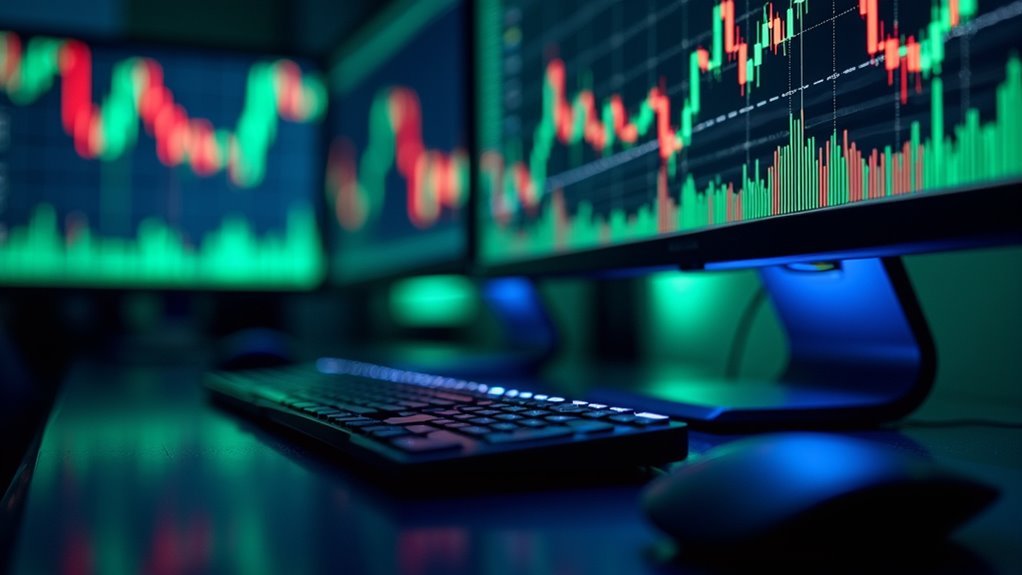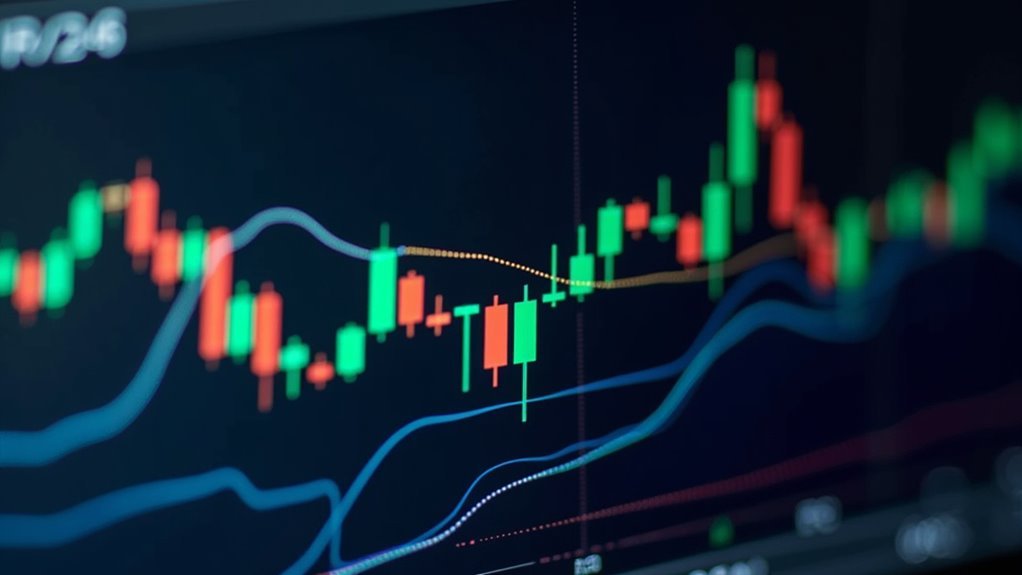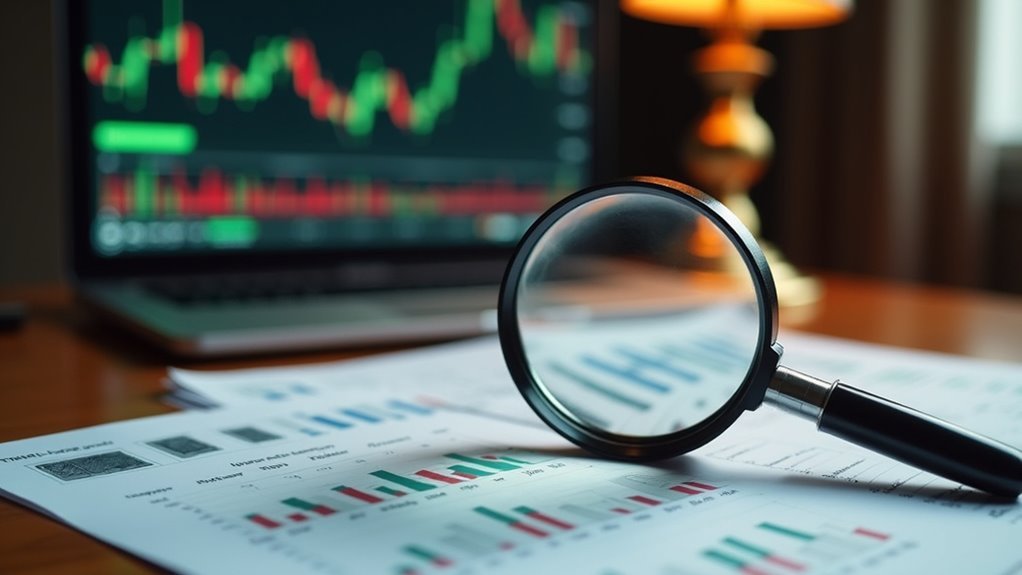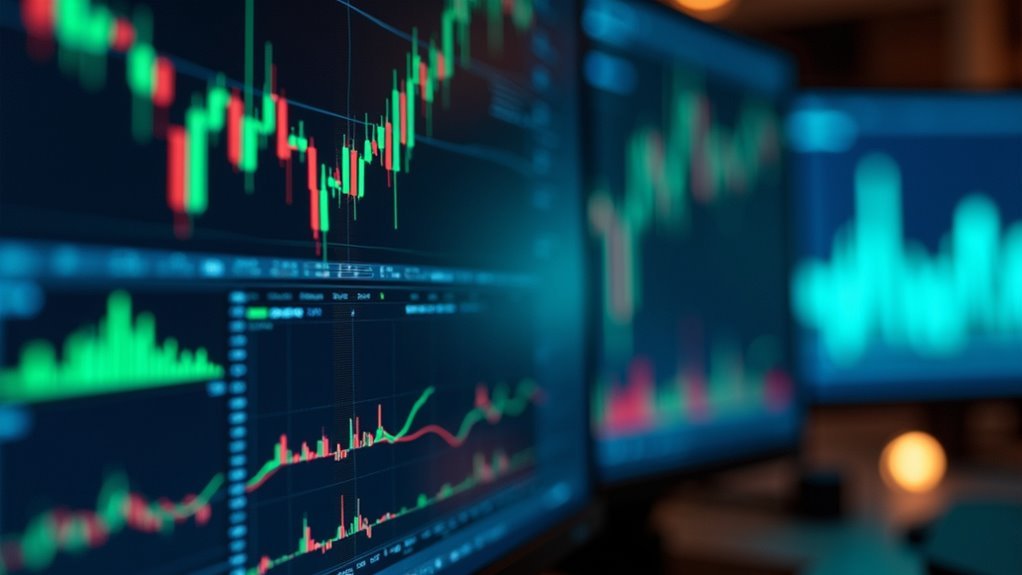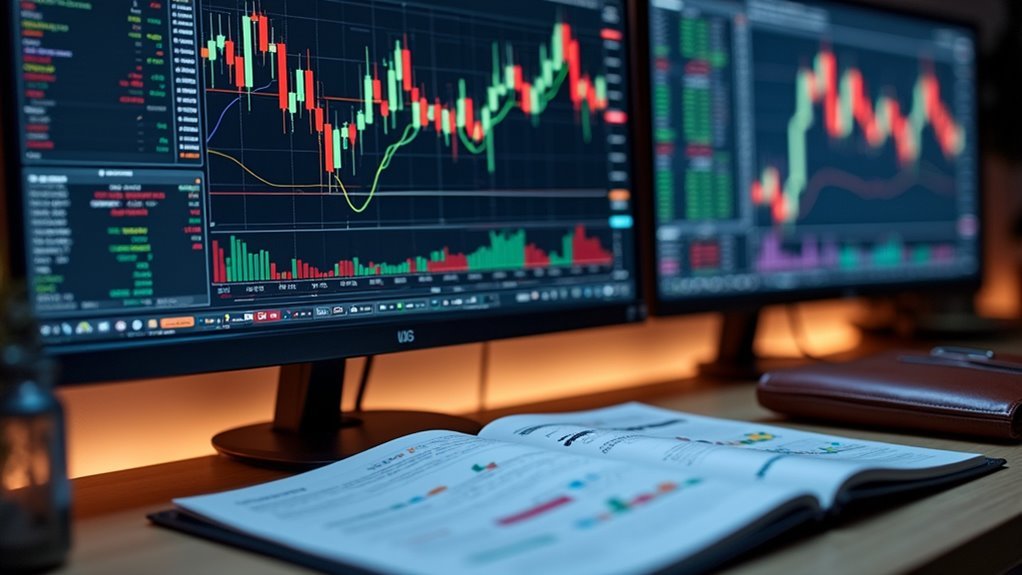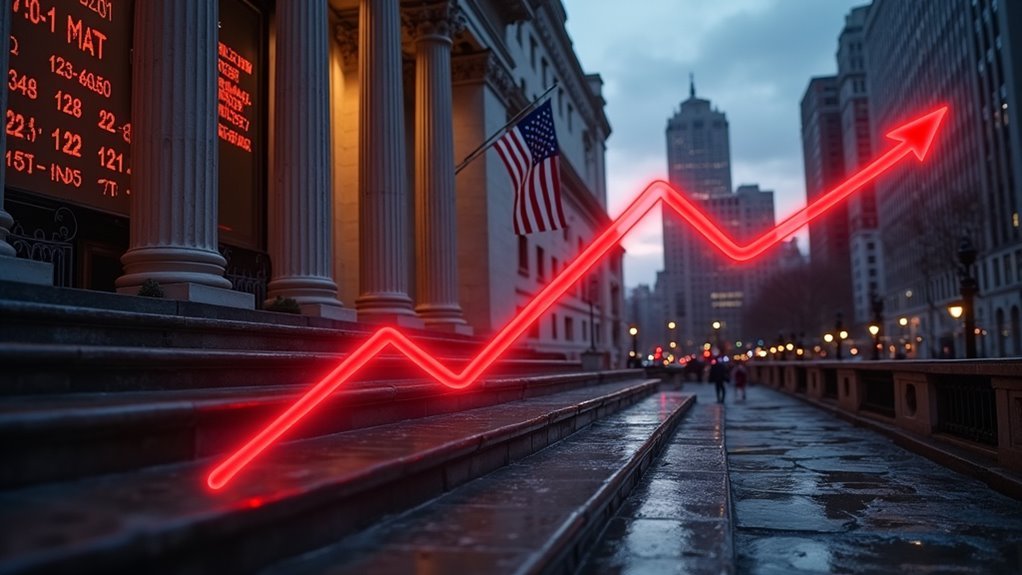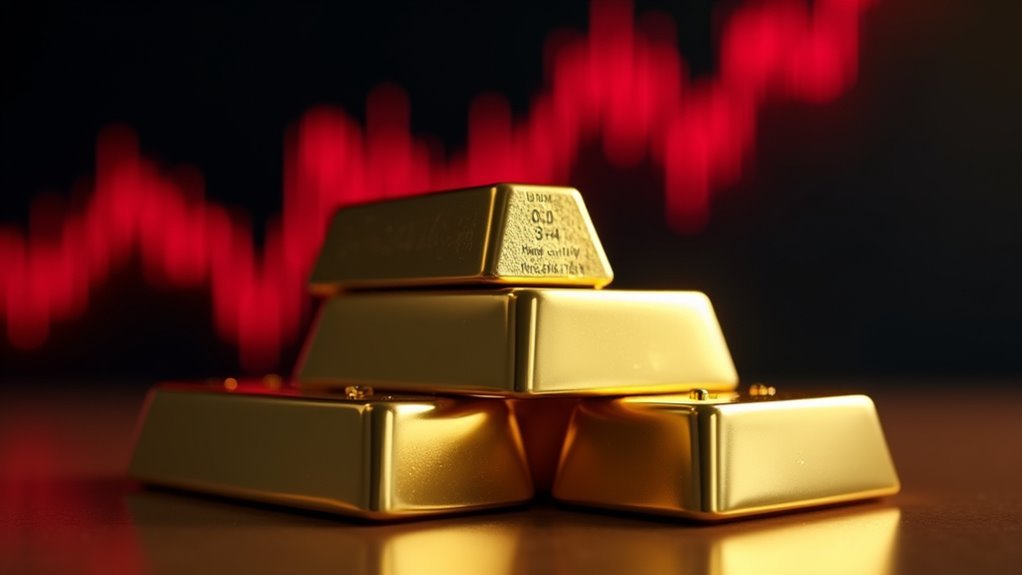Trading volume shows how many shares change hands in a given timeframe – simple as counting restaurant customers. It’s the ultimate truth-teller for price movements. Heavy volume means serious action and big players making moves. Light volume? That’s ghost town territory, usually during lunch hours or pre-holidays. Smart traders watch volume like hawks, using tools like OBV and VWAP. There’s a whole world of volume analysis waiting beneath the surface.
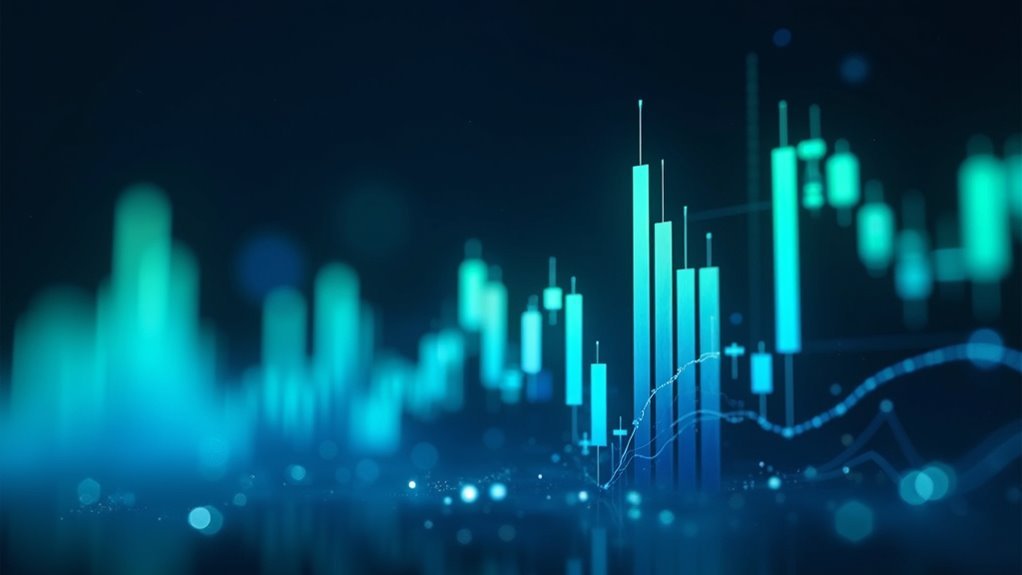
Trading volume, the relentless heartbeat of the financial markets, measures the total number of shares changing hands during a specific time period. Exchanges report these figures hourly and at day’s end, with final numbers rolling in the next trading day. It’s like counting how many times the door swings at a busy restaurant – every transaction gets tallied, no exceptions.
For investors, volume isn’t just another boring statistic. It’s the crucial sign that confirms whether a price move is the real deal or just market noise. High volume means serious business – big players are probably making moves. When institutions start throwing their weight around, volume spikes like a fever chart. You’ll see it most dramatically during market opens and closes, when traders are either caffeinated or desperate to wrap up their day. Using a moving average indicator on volume data can help identify typical trading activity levels. Like dividend yields from stocks, volume patterns can signal important market developments.
Low volume? That’s when things get sketchy. Picture a ghost town in the middle of a trading day – tumbleweeds rolling through the order books. It happens during lunch hours or before holidays, when traders are more interested in their sandwiches than their screens. These quiet periods can make price movements about as reliable as a weather forecast. When stocks experience significant price fluctuations, trading volume increases accordingly.
In uptrends, volume should swell like a rising tide. It’s nature’s way of saying, “This rally means business.” The same goes for downtrends – increasing volume on down days is like gravity getting stronger. But when volume starts fading during a trend, something’s off. It’s like watching a party slowly die as guests sneak out the back door.
Smart money tracks volume through sophisticated tools like On-Balance Volume (OBV) and Volume-Weighted Average Price (VWAP). These indicators help decode the market’s body language, showing where the real action is happening. The Accumulation/Distribution Line and Chaikin Money Flow add more pieces to the puzzle, tracking how money moves through the market like water through pipes.
Volume by Price shows exactly where traders are throwing down their bets, creating a heat map of market activity.
Frequently Asked Questions
How Does After-Hours Trading Volume Differ From Regular Trading Hours?
After-hours trading volume is tiny compared to regular hours – typically just 1-2% of normal activity.
It’s a ghost town out there.
Big institutional investors dominate these sessions while most retail traders are sitting it out.
The thin volume means wider spreads and jumpier prices.
Less liquidity also makes prices swing more dramatically on relatively small trades.
Welcome to the wild west of extended trading.
Can Unusually High Trading Volume Indicate Potential Market Manipulation?
Unusually high trading volume can definitely signal market manipulation.
When volume spikes without clear news or catalysts, something fishy might be going on. Classic red flags include wash trading, spoofing, and those annoying pump-and-dump schemes.
But hold up – big volume isn’t always sketchy. Sometimes it’s just heavy institutional trading, index rebalancing, or reaction to major news.
Regulators watch this stuff like hawks, using fancy algorithms to catch the bad guys.
What Role Does Trading Volume Play in Technical Analysis Indicators?
Trading volume is absolutely essential for technical indicators. It validates price movements and helps spot trend reversals.
Popular indicators like On-Balance Volume track buying pressure over time, while VWAP shows average traded prices weighted by volume.
Chaikin Money Flow measures accumulation versus distribution. Without volume data, price movements tell only half the story.
Volume confirms trends, exposes weaknesses, and warns of potential reversals.
How Do Stock Splits Affect Historical Trading Volume Data?
Stock splits force historical volume data to get adjusted – it’s just how it works.
When a company does a 2-for-1 split, past trading volumes double in the records. Makes sense, right? It’s about keeping comparisons consistent over time.
Trading platforms automatically handle these adjustments. Post-split, volume often spikes temporarily.
Studies show an average 18% sustained increase in trading activity, though this effect typically fades.
Why Do Some Stocks Maintain High Prices Despite Low Trading Volumes?
Stocks can maintain high prices with low volume due to several key factors.
Limited float creates scarcity, with few shares available for trading.
Strong fundamentals justify elevated valuations – profits matter, after all.
Market inefficiencies play a role too, as less trading means less price discovery.
Then there’s investor psychology: long-term holders sitting tight, refusing to sell their precious shares.
Simple supply and demand.
